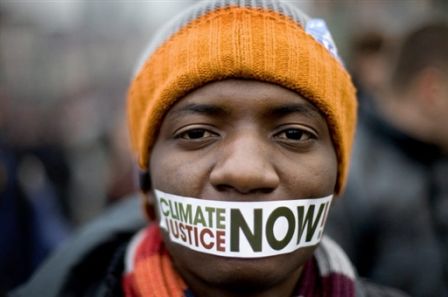This post was written by Penny Lewis, an Assistant Professor of Labor Studies at The Murphy Institute
For the second time in two weeks the New York Times has devoted its lead news story to reports about our unfolding environmental cataclysm. Last week’s lead brought home the fact that climate change is happening now, covering reports that track contemporary shifts in temperature and rainfall across the United States. Yesterday’s story, far removed from our borders, is even more disturbing: the western ice sheet of Antarctica is fatally compromised, and the oceans will rise at least 4 feet this century from this alone. Quite possibly they will rise much more, and most certainly much more – 10-12 feet – in the following period.
If you’re like me, you read these stories with a churning set of feelings: powerlessness, frustration that approaches rage, a sense of profound loss. And you might also find yourself revisiting the same question: how can we engage this central problem of our time?
The Murphy Institute Blog invites readers to take up this question from the unique perspectives we can bring to it. Why is climate change relevant to our lives in New York City today? What are groups and communities doing to address it? How can we instill the sense of urgency that is necessary for organizations and policy makers to tackle this massive problem? How can our unions better engage the problem of climate change? What about our schools? How can our communities envision and organize a more sustainable present, or leverage our power to push for a live-able future?
We’re inviting blog submissions and event listings that relate to these questions, especially as we lead up to the United Nations Climate Change Summit, being held in New York this coming September. Many actions and meetings, some of which will be organized under the banner of The People’s Climate March and Climate Week NYC, will be held leading up to and following the Summit’s opening on September 23.
From the labor studies side of things, Murphy students have begun engaging this question, including a far-reaching course on “Unions, Climate Change, and Sustainability” offered last year by Lara Skinner and Sean Sweeney of Cornell’s Global Labor Institute. One student from that class, Eddie Rosario, is just completing his capstone for a Labor Studies master’s degree by writing about “US Labor Combating Environmental Injustices: Organizing Opportunities Locally and Globally.” In a presentation about his project this past Monday night, Eddie pointed out how rare it is that unions foreground demands for a science-based climate policy as part of their political platform, and how few mobilize and educate their members to push for the kinds of infrastructure overhaul and good and green jobs that will be necessary to stave off some of the worst ravages that otherwise await us. One of the authors of the Antarctica studies covered by the Times asked, “If we have indeed lit the fuse on West Antarctica, it’s very hard to imagine putting the fuse out. But there’s a bunch more fuses, and there’s a bunch more matches, and we have a decision now: Do we light those?”
Labor is faced with hard dilemmas when it comes to this decision. When coal jobs remain one of the scarce options for employment in West Virginia, or hydraulic fracking seems like a panacea to Pennsylvania’s unemployment, unions often uphold the dictum that “any job is better than no job” – and a paycheck today beats the promise of good green jobs in the future. But labor’s short-run perspective, as much as it meets the needs of some workers in some places, undercuts the future of more workers in more places when it supports dirty and destructive industries. On the other side, any environmental movement that does not uphold as part of their vision the fundamental right of workers to support themselves and their families is also working against the long-term viability of their project. In groups like the Blue Green Alliance, environmental groups ally with labor to make sustainable and quality employment policy part of their core efforts; all of the Alliance’s initiatives make good progress towards reaching common ground between these two movements. But, as Eddie asks, how many unions are engaging in deep conversation, let alone sustained action, about such promising roads we might take?
Please send us your ideas and reports – and see you on the streets this September!
If you want to take action, join the Murphy Institute at the People’s Climate March NYC Organizing Meeting this coming Tuesday.



